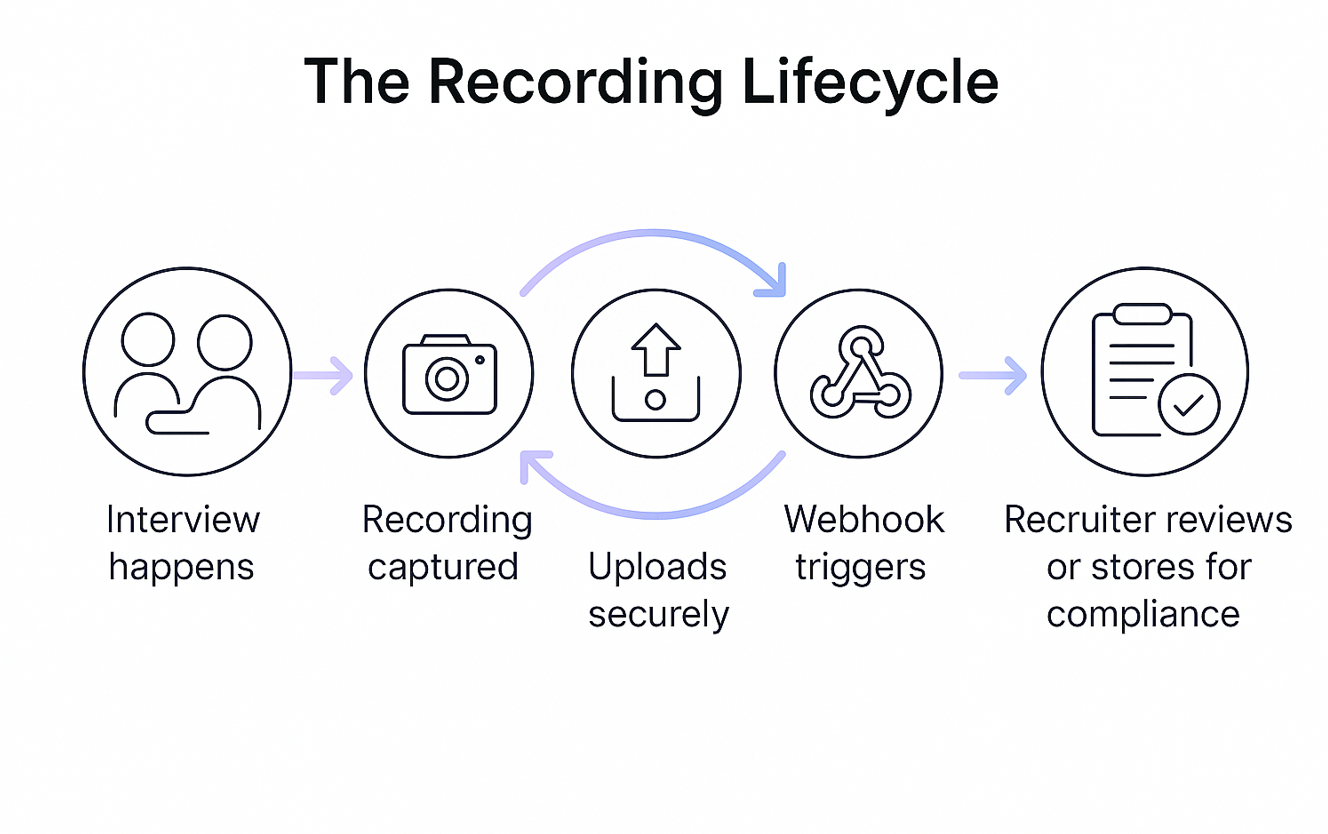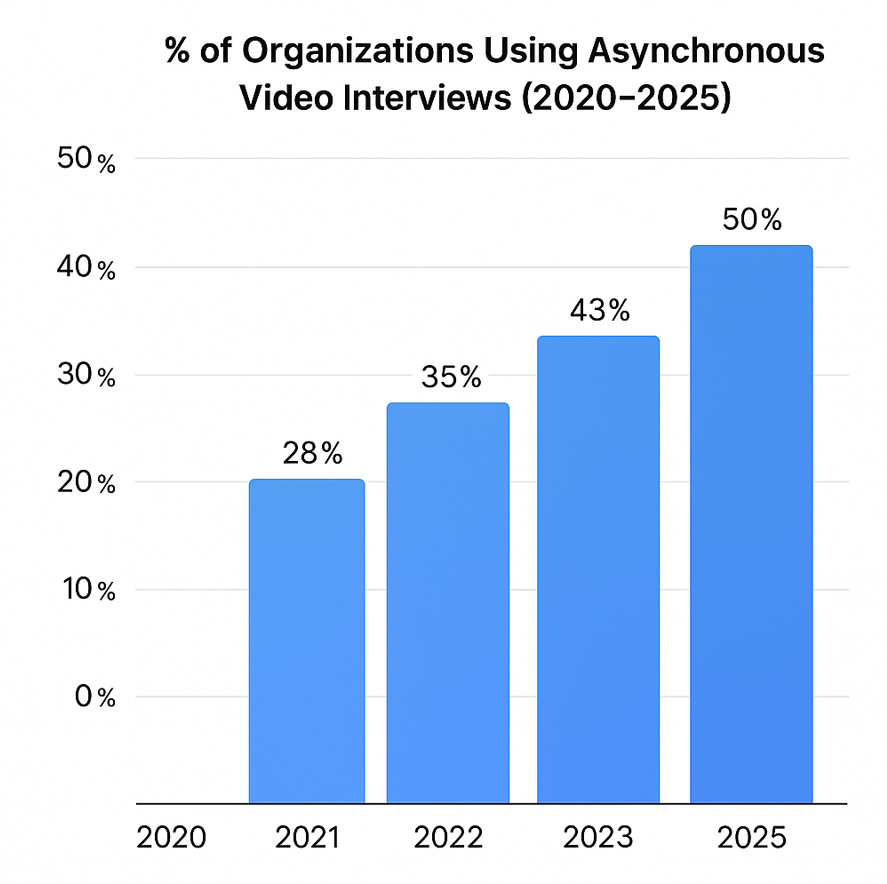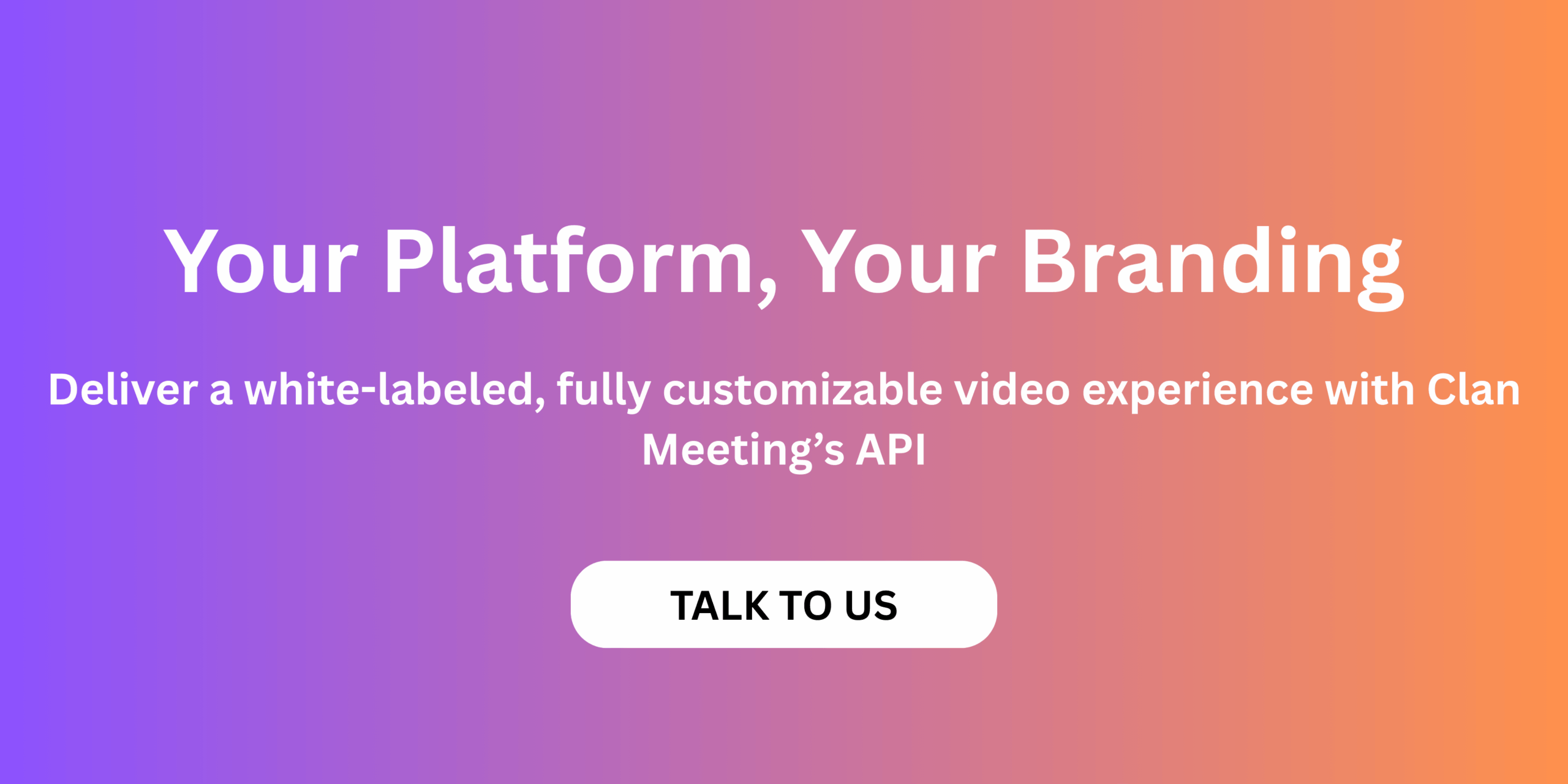The way companies hire has quietly transformed.
Interviews, skill assessments, and onboarding sessions all happen over video now. And with that change comes a new expectation - video should not be an afterthought or a separate link. It should be part of the product experience itself.
That is where the video interview SDK for HR SaaS platforms comes in.
It gives product teams a simple way to embed secure, low-latency video directly within their app - no separate meeting links, no external dependencies.
And when that SDK includes recording, it stops being a communication layer and starts becoming an insight system.
Why Recording Quietly Became the Backbone of Modern Hiring
If you have ever been part of a hiring cycle, you know how messy scheduling can get. A recruiter speaks to the candidate, the manager wants to review the conversation later and someone else joins late and misses context.
Recording fixes that entire chain by turning interviews into a shared, reviewable artefact.

Recording also brings fairness into the process. Everyone gets judged on the same conversation and not on the notes scribbled mid-call.
And then there is compliance.
In healthcare and finance hiring, you need an audit trail and recording provides that without friction. Over time, we have seen teams use recorded sessions for training new recruiters, building consistency in tone, and even improving candidate experience.
That is what makes recording as not just an add-on but a very fundamental capability within an interview platform.
What a Video Interview SDK Actually Does
A video interview SDK is what allows an HR SaaS product to own its video experience. Instead of embedding third-party links or depending on tools like Zoom, you embed a secure, customizable video layer right inside your app.
It includes the following things -
- Frontend components for joining and hosting interviews
- Backend APIs to handle sessions, authentication, and participants
- Recording and playback endpoints
- Webhooks that notify your system when events happen - like a recording finishing or someone joining late
Think of it as the infrastructure behind your hiring experience where candidates never leave your app and recruiters stay within your workflow.
Adding Recording to Your SDK Set-up
The moment you add a recording feature to your SDK setup, the product value changes shape as you move from real-time collaboration to lasting insight.
Here are a few use cases -
- Screening interviews - Recruiters can record quick screens and let hiring managers review them asynchronously.
- Technical assessments - Recordings paired with coding results show not just what a candidate solved, but how they thought.
- Async onboarding - With an async onboarding video interview SDK, HR teams can record intro sessions or culture stories once and reuse them for every new hire.
- Compliance workflows - Regulated industries rely on recordings to verify process transparency.
We once saw a mid-size tech company use these recordings to train all new recruiters in under two weeks. They had built their own internal interview library- something that would have been impossible without embedded recording.
The Rise of Asynchronous Hiring
With global teams and flexible work, asynchronous video is fast becoming the default for early-stage screening. Candidates record answers in their own time and recruiters watch when they are free - no time zone juggling, no back-and-forth rescheduling.
According to Gartner, over 40% of mid-to-large organizations now use asynchronous interviews at some point in their hiring process.

From what we have seen, the biggest advantage is speed. A recruiter can review ten async interviews in the time it takes to schedule one live call.
For HR SaaS teams, this means the SDK must handle recording, processing, and playback seamlessly - otherwise the whole async flow collapses.
Choosing the Right Video Interview SDK
Selecting the right SDK is not just a technical choice - it shapes how recruiters experience your platform, how secure candidate data remains, and how easily your product can evolve.
A good SDK should almost disappear into your product invisible to users but powerful enough to handle every edge case underneath.
Here are a few factors to consider -
1. Security and Compliance
Video interviews often capture sensitive personal information - names, faces, voices, even assessment details and that data must be protected at every layer.
Therefore, look for providers offering end-to-end encryption in transit and at rest, with GDPR and SOC 2 certifications already in place.
Equally important is regional data hosting.
Many enterprise clients now require video data to stay within specific geographic boundaries, especially in healthcare, finance, or public sector hiring. If your SDK vendor cannot guarantee that, compliance will eventually become a bottleneck.
2. Low Latency and Bandwidth Adaptation
A video interview is only as good as its stability - if a candidate’s audio lags or their video freezes mid-answer, even the best recruiter cannot make a fair assessment.
Choose SDKs built with adaptive bitrate streaming and intelligent fallback mechanisms. These automatically adjust quality based on available bandwidth so users in low-connectivity areas can still participate smoothly.
In our experience, HR platforms that optimize for global bandwidth variance consistently see higher candidate completion rates especially in regions like South Asia, Latin America, or Eastern Europe where network strength fluctuates.
3. Developer Experience
Integration speed directly affects your go-to-market timeline and therefore the right SDK should be straightforward to implement ideally under 20 lines of code to get a basic interview running.
Good documentation, working sample apps, and responsive developer support are not “nice to have.” They are what differentiate an SDK partner from a raw API vendor.
4. Custom Branding
Video is a front-stage feature and it is what candidates and recruiters see first. If the interface feels disconnected from your product, users will sense that separation instantly.
Your SDK should let you theme, style, and brand the video experience to match your own platform including colours, typography, buttons, and even in-call layouts.
A candidate should never feel like they have left your product to join a different service. The entire experience should stay cohesive, familiar, and trustworthy.
5. Managing the Lifecycle of Recordings
Recording is not just about storing the file. It also includes everything that happens after the call ends - where the file goes, who can access it, and how it connects back to the right candidate record.
Look for automated uploads, secure access URLs, and webhook notifications that alert your system the moment a recording is complete.
This automation removes the need to manually manage large files and ensures that every recording is immediately available for review or compliance storage.
6. Usage-Based Pricing
As we all know, hiring volumes does not remain same always. One quarter hiring might be at its lowest with minimal need of hiring infrastructure while other quarters might see a boom with hundreds of openings.
So, when there isn't much going on, it's hard to explain the expense of fixed licensing cost on hiring tools. And therefore SDK providers that charge based on usage or per minute are better suited for such scenarios. You simply pay for what you use which keeps infrastructure costs stable and doesn't limit scalability.
This model is especially useful for new businesses and mid-sized platforms that are still figuring out how many users they have or how much money they make.
The Bigger Shift
Video is no longer just an add-on in HR software - it is now a key part of the infrastructure that makes modern hiring possible.
And recording is the layer that turns simple video calls into actionable insights based on the discussion.
The next generation of HR platforms will not just stop at connecting people but will capture, organize, and learn from every interaction transforming each conversation into actionable insight.
An embedded video interview SDK with recording makes this shift possible.
It delivers a hiring experience that is faster, more compliant, and fundamentally more human as the interview no longer lives outside the product. It becomes part of the product itself seamlessly connected to everything else that hiring teams do.
Frequently Asked Questions
1. What is a video interview SDK?
A video interview SDK is a developer toolkit that allows HR software platforms to embed live video and recording features directly within their application. It provides APIs, SDKs, and prebuilt UI components that handle everything from real-time communication to secure storage of recordings.
2. Why should HR SaaS platforms embed video instead of using third-party tools?
Embedding video through an SDK keeps the experience seamless and secure. It eliminates external meeting links, improves data control, enhances branding consistency, and allows teams to record, review, and analyze interviews without leaving their own platform.
3. How does a video interview SDK with recording improve the hiring process?
Recording enables asynchronous reviews, fairer evaluations, and easier compliance. Recruiters can revisit interviews, managers can assess on their own time, and companies can maintain an audit-ready record — all while saving hours of coordination effort.
4. What are the key features to look for in a video interview SDK?
The most important factors include end-to-end encryption, low-latency streaming, developer-friendly integration, customizable branding, automated recording management, and usage-based pricing that scales with hiring volume.
5. How is asynchronous video changing modern hiring workflows?
Asynchronous video allows candidates to record responses at their convenience and recruiters to review them later. This flexibility reduces scheduling conflicts, shortens hiring timelines, and helps maintain consistency across interviews — especially for global teams.
6. What makes usage-based pricing beneficial for HR SaaS platforms?
Hiring demand fluctuates throughout the year. A usage-based model lets platforms pay only for what they use, keeping infrastructure costs predictable during slow hiring cycles while still scaling easily when recruitment activity spikes.


